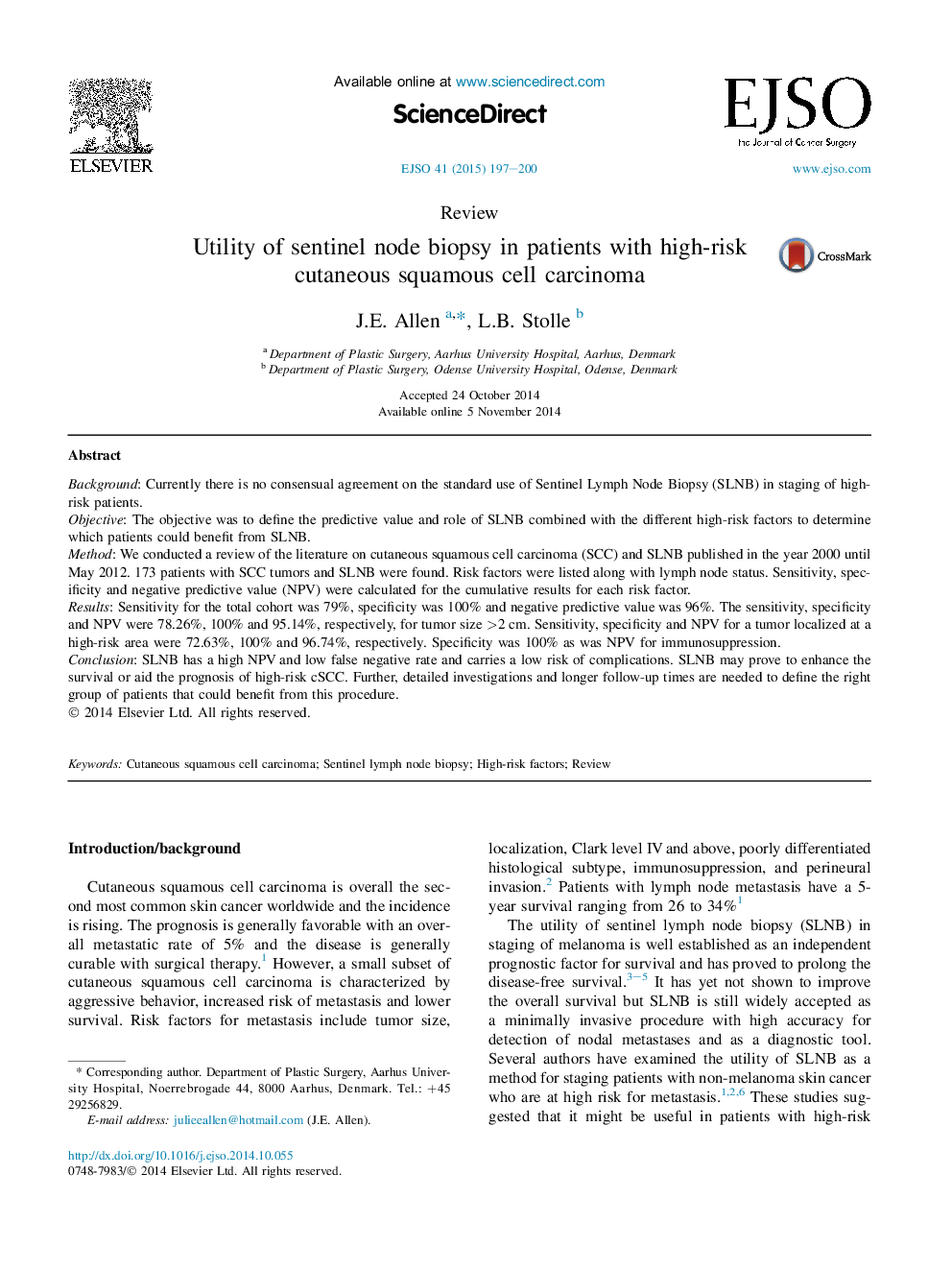| Article ID | Journal | Published Year | Pages | File Type |
|---|---|---|---|---|
| 3984636 | European Journal of Surgical Oncology (EJSO) | 2015 | 4 Pages |
BackgroundCurrently there is no consensual agreement on the standard use of Sentinel Lymph Node Biopsy (SLNB) in staging of high-risk patients.ObjectiveThe objective was to define the predictive value and role of SLNB combined with the different high-risk factors to determine which patients could benefit from SLNB.MethodWe conducted a review of the literature on cutaneous squamous cell carcinoma (SCC) and SLNB published in the year 2000 until May 2012. 173 patients with SCC tumors and SLNB were found. Risk factors were listed along with lymph node status. Sensitivity, specificity and negative predictive value (NPV) were calculated for the cumulative results for each risk factor.ResultsSensitivity for the total cohort was 79%, specificity was 100% and negative predictive value was 96%. The sensitivity, specificity and NPV were 78.26%, 100% and 95.14%, respectively, for tumor size >2 cm. Sensitivity, specificity and NPV for a tumor localized at a high-risk area were 72.63%, 100% and 96.74%, respectively. Specificity was 100% as was NPV for immunosuppression.ConclusionSLNB has a high NPV and low false negative rate and carries a low risk of complications. SLNB may prove to enhance the survival or aid the prognosis of high-risk cSCC. Further, detailed investigations and longer follow-up times are needed to define the right group of patients that could benefit from this procedure.
